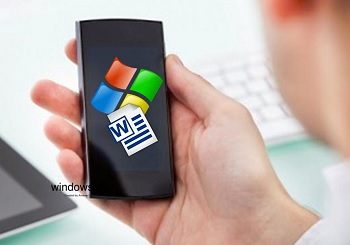This is only one of the latest of a tremendous wave of changes being made by the technology giant.
Among the many new pieces of technology news coming from the Redmond, Washington based tech giant has been the release of Microsoft Office for free for users of mobile devices.
This is a move that has taken many by surprise, when taking several of the company’s previous strategies into consideration.
For many years, Microsoft Office had not even been made available in a format that was compatible with mobile devices, regardless of price. Now it is has been announced that it will be a free software suite. Office was released for the iPhone in the summer of 2013, and soon afterward there was a version made for Android smartphones, as well. It wasn’t until March of this year that it was available for the iPad.
Previously, there was a bit of a catch, as Microsoft Office was only be free to those who had a paid subscription.
 In order to be able to take advantage of the software suite, users previously needed to have an Office 365 subscription, which comes with a price tag of $99. Now, regardless of whether or not users are subscribers to Office 365, they will now be able to use their iPhones, iPads, and Android devices to create and edit spreadsheets, documents, and presentations through Office.
In order to be able to take advantage of the software suite, users previously needed to have an Office 365 subscription, which comes with a price tag of $99. Now, regardless of whether or not users are subscribers to Office 365, they will now be able to use their iPhones, iPads, and Android devices to create and edit spreadsheets, documents, and presentations through Office.
This decision has been made by Microsoft at a time in which the usage of smartphones has now started to pass the use of laptops and desktops, which has historically been the heart and soul of Office. Moreover, Microsoft was also facing a threat to its massive hold on the document, spreadsheet, and presentation market, as the products of competitors were starting to rapidly improve and were already available to users of mobile devices at better prices.
Competition to the mobile version of Microsoft Office has included products such as Google Drive productivity apps, which have been available for free to users for some time now. Apple has also been offering its iWork suite for free to users of iPhones and iPads, as of last year.
As more teens and children get their hands on smartphones, the largest gamer demographic is getting younger.
Recent research published in the 2014 Deconstructing Mobile & Tablet Gaming Report has shown that mobile gaming has become highly prevalent in modern life, and over the last year, there has been a considerable drop in the average age of gamers in this category.
The report was created by EEDAR and showed that there are 142 million mobile gamers in North America.
The mobile gaming study also showed that this figure has increased by 111 over the last year. The average amount of money spent on mobile games over the last year was $32.65. In total, this generated an estimated $4.6 billion in revenue. The leading 6 percent of the spenders in this category are responsible for generating about half of all of that revenue. It should also be noted that almost half of all players of mobile games do not pay for that experience.
The average age of the players in the mobile gaming environment is currently 27.7 years old.
 That represents a dramatic drop from the average age in 2013, which was seven years older. Among the primary reasons for this is that it is rapidly becoming more commonplace for adolescents, and even children, to own their own smartphones. This is the case because the cost of lower end devices is falling, making it more affordable for families to be able to equip their youngest members with mobile devices.
That represents a dramatic drop from the average age in 2013, which was seven years older. Among the primary reasons for this is that it is rapidly becoming more commonplace for adolescents, and even children, to own their own smartphones. This is the case because the cost of lower end devices is falling, making it more affordable for families to be able to equip their youngest members with mobile devices.
In the EEDAR report, the results of the examination of the market showed that casual mobile gamers are most likely to be on the younger side – with an average age of 26 years old – and are most likely to be female (70 percent). Among the core gamers over smartphones and tablets, however, the average age is slightly older than that – at 30 years old – and the players have a greater likelihood of being male (58 percent).
The survey was conducted with the participation of 3,500 active mobile gamers. Each of those individuals had taken part in mobile gaming within the three months prior to the study, using either their smartphones or tablet devices.
 In order to be able to take advantage of the software suite, users previously needed to have an Office 365 subscription, which comes with a price tag of $99. Now, regardless of whether or not users are subscribers to Office 365, they will now be able to use their iPhones, iPads, and Android devices to create and edit spreadsheets, documents, and presentations through Office.
In order to be able to take advantage of the software suite, users previously needed to have an Office 365 subscription, which comes with a price tag of $99. Now, regardless of whether or not users are subscribers to Office 365, they will now be able to use their iPhones, iPads, and Android devices to create and edit spreadsheets, documents, and presentations through Office.
 That represents a dramatic drop from the average age in 2013, which was seven years older. Among the primary reasons for this is that it is rapidly becoming more commonplace for adolescents, and even children, to own their own smartphones. This is the case because the cost of lower end devices is falling, making it more affordable for families to be able to equip their youngest members with mobile devices.
That represents a dramatic drop from the average age in 2013, which was seven years older. Among the primary reasons for this is that it is rapidly becoming more commonplace for adolescents, and even children, to own their own smartphones. This is the case because the cost of lower end devices is falling, making it more affordable for families to be able to equip their youngest members with mobile devices.